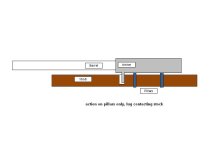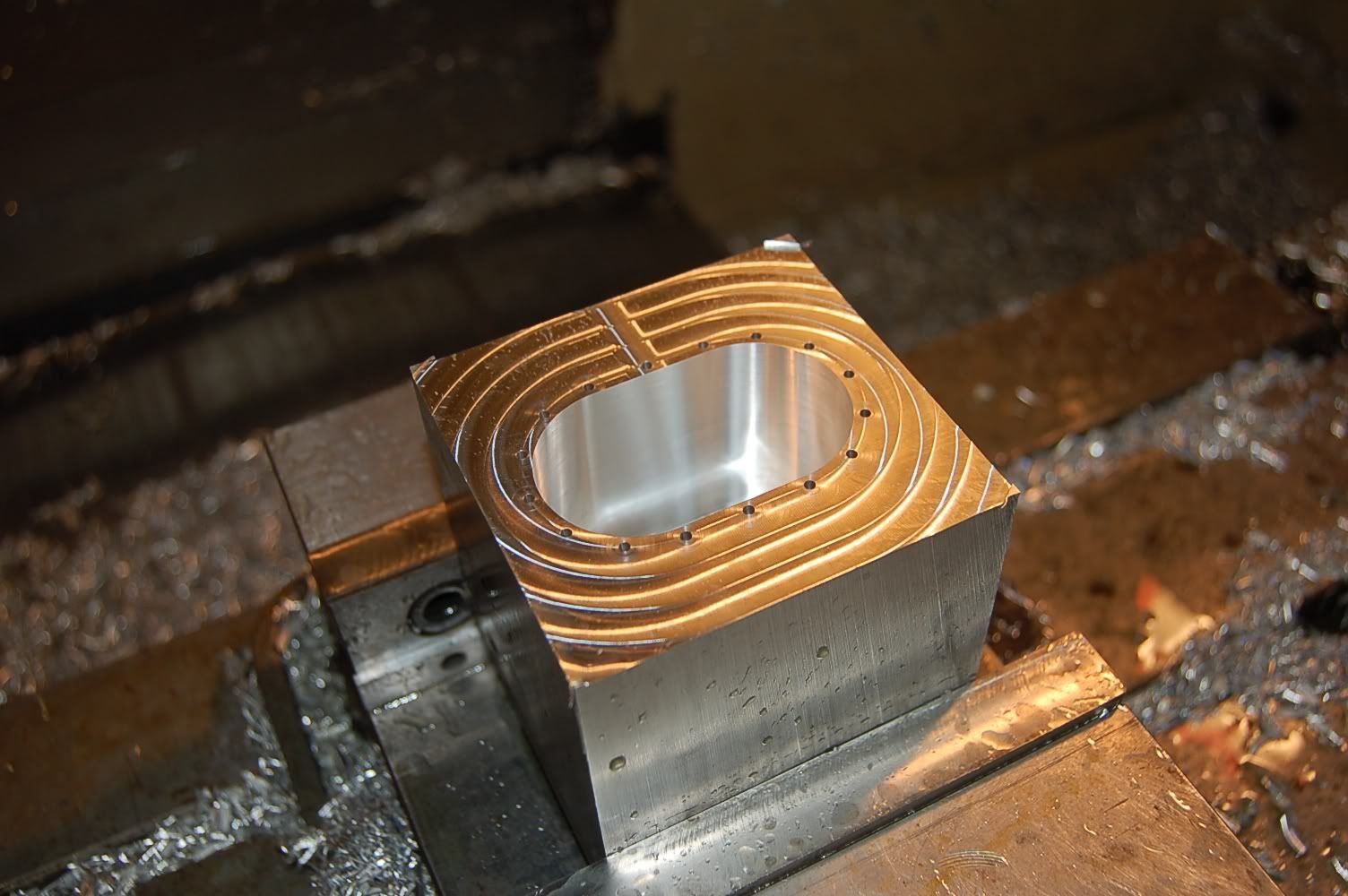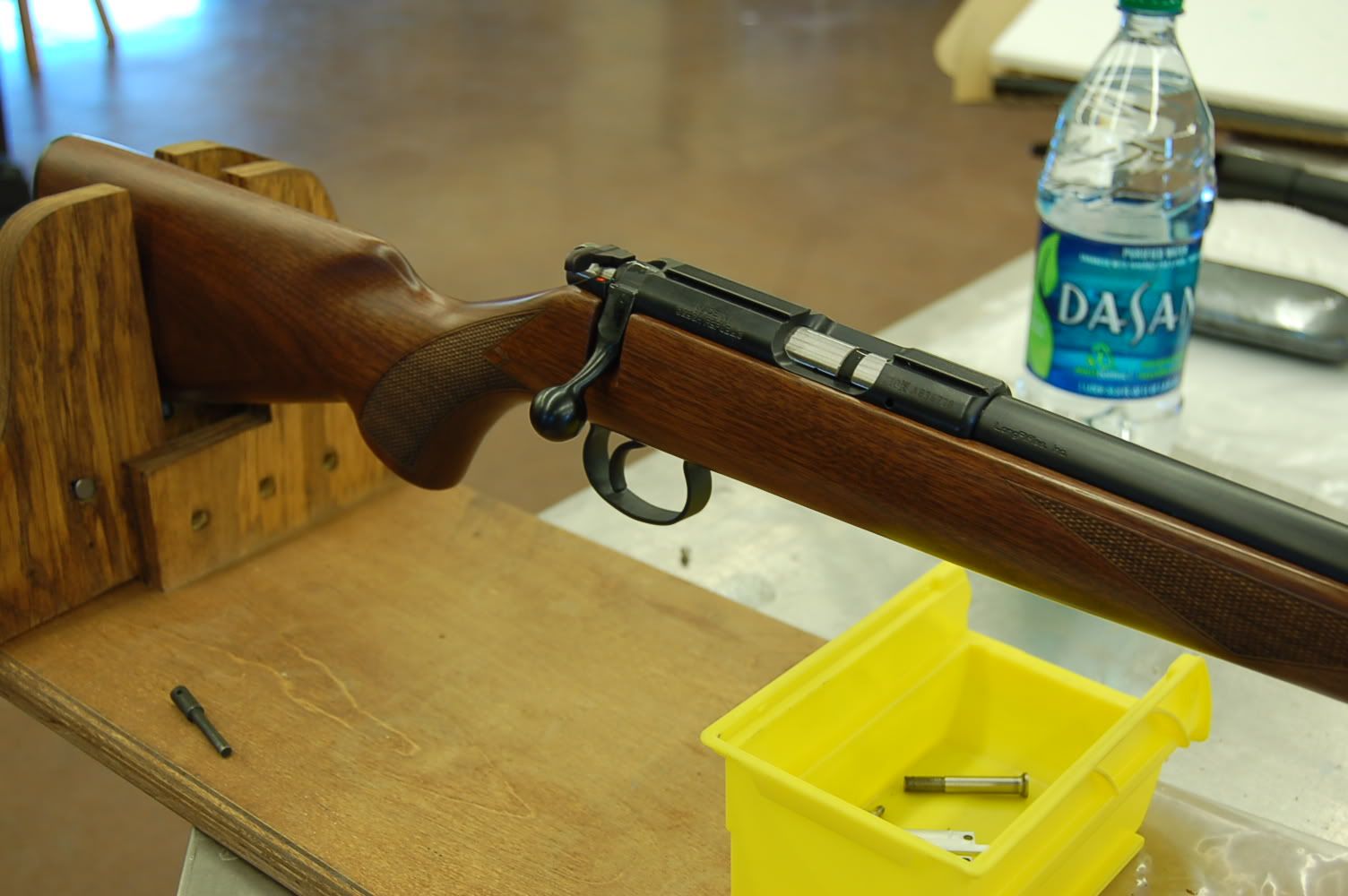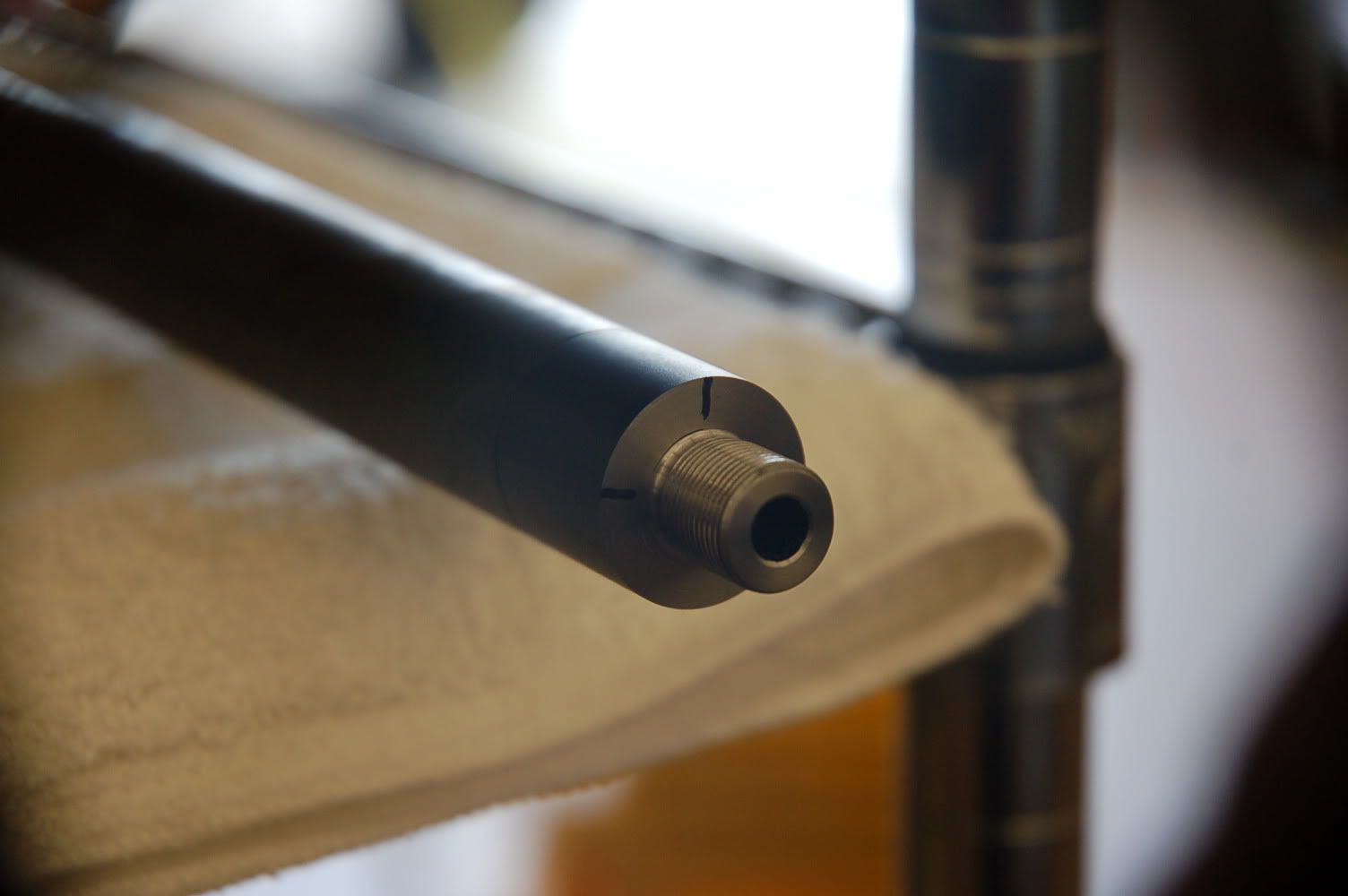My system for bedding this kind of barreled action is that epoxy is in 4 places:
1) behind the recoil lug
This epoxy is to be a "low compliance" [stiff] and consistent connection of the recoil force to the stock.
2) under the flat part of the receiver for the square inch behind the recoil lug. This is contiguous with behind the recoil lug epoxy.
This epoxy is to be a low compliance and consistent connection of the bullet spin reaction force to the stock.
3) under the first inch of barrel in front of the receiver. The epoxy only goes up 45 degrees from the bottom on the sides of the barrel.
This epoxy is to be a low compliance and consistent connection of the front action screw force to the stock. That force is already supported behind the recoil lug and needs to be supported in front of the front action screw.
4) around the pillar that supports the rear tang of the receiver. The pillar is pre compressed, perpendicularly aligned, and flush to receiver aligned, with a small diameter head action screw. The pillar is scored and the stock hole is tapped so the epoxy gets traction. I make pillars from 3/8" outside diameter 1010 steel tubing.
The rear pillar is to be a low compliance and consistent connection of the rear action tang force to the stock. The rear pillar acts as the 3rd dominant point in defining the plane of the barreled action to stock connection. The other two dominant points are the two sides of the flat epoxy for the inch behind the recoil lug.
After the bottom metal is bedded in front and the rifle is assembled, the rear pillar should support the bottom metal in the rear. The magazine engagement the receiver is checked for feeding. The bedding job is tested by banging the barrel with a palm while griping the stock wrist with the other hand. The sound should be high frequency with long sustain and no buzzing. That is because the barrel is floated in the stock and the two act as a tuning fork, while the wrist is at a node. High frequency with high mass implies low compliance. The sustain is from the low losses due to low compliance coupling. We want low compliance so the barreled action mass and stock mass are effectively summed in reaction to the recoil before bullet escapement. The higher the mass rifle, the easier it it to control recoil and get accuracy. The buzzing would mean there is not enough clearance some where.
Shoot the rifle. Then put some piece of dirt between the action and the bedding. It will not make the same sound and it will not give the same accuracy, as the compliance of the fit has been raised. Then clean that dirt out of there

What does it all mean?
Epoxy does not get on the sides of the receiver.
++++++++++++++++++++++++++++++++++++++++++++++++++++++++++++++++++++++++++++++++++++++++++++++++++++++++++
Here are the experts:
http://riflestocks.tripod.com/bedding.html
http://www.charm.net/~kmarsh/glasbed.html
http://yarchive.net/gun/rifle/pillar_bedding.html
http://www.gun-tests.com/performance/nov96beddingjob.html
http://www.ranchtrippin.com/bedding/
http://www.scorehi.com/main.htm
http://www.6mmbr.com/pillarbedding.html
http://www.brownells.com/aspx/NS/Store/ProductDetail.aspx?p=9899
http://www.brownells.com/aspx/ns/store/catSearch.aspx?c=1418
http://www.z-hat.com/Accurate.htm
http://www272.pair.com/stevewag/mmrifle/mmrifle3.html
http://www272.pair.com/stevewag/turk/turkbed1.html
http://www272.pair.com/stevewag/turk/turkbed2.html
http://www272.pair.com/stevewag/turk/turkbed3.html
http://yarchive.net/gun/rifle/remington700.html











